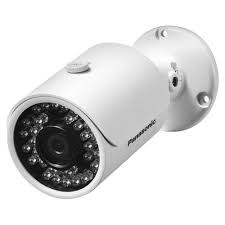RFID Access Control: Enhancing Security and Efficiency
RFID (Radio Frequency Identification) technology has revolutionized the way organizations manage access control and security. By utilizing RFID tags and readers, businesses can enhance security measures, streamline access processes, and improve overall operational efficiency.
One of the key advantages of RFID access control systems is their ability to provide secure and convenient access to authorized personnel. RFID tags, which can be in the form of cards or key fobs, contain unique identification information that is read by RFID readers placed at entry points. This allows for quick and seamless entry without the need for physical keys or passwords.
Furthermore, RFID access control systems offer a high level of security by allowing administrators to easily manage access permissions. Access rights can be customized for different individuals or groups, ensuring that only authorized personnel can enter restricted areas. In addition, these systems provide real-time monitoring capabilities, allowing administrators to track entry and exit activities for enhanced security oversight.
Another benefit of RFID access control is its scalability and flexibility. These systems can be easily integrated with other security technologies such as CCTV cameras, alarms, and biometric scanners to create a comprehensive security infrastructure. Additionally, RFID technology can be deployed across various industries and environments, including offices, hospitals, schools, manufacturing facilities, and more.
In terms of operational efficiency, RFID access control systems offer significant time and cost savings compared to traditional access methods. With automated entry processes and centralized management capabilities, organizations can reduce administrative overheads associated with manual key management. Moreover, the data collected from RFID access control systems can be used for analytics purposes to optimize security protocols and improve overall operational workflows.
In conclusion, RFID access control systems play a crucial role in enhancing security measures while improving efficiency within organizations. By leveraging the power of RFID technology, businesses can create secure environments that protect assets, personnel, and sensitive information effectively.
Understanding RFID Access Control: Top 8 Frequently Asked Questions
- What is RFID access control?
- How does RFID access control work?
- What are the benefits of using RFID access control systems?
- Is RFID access control secure?
- Can RFID access control systems be integrated with other security technologies?
- Are RFID tags reusable in access control systems?
- What industries can benefit from implementing RFID access control?
- How can organizations manage and monitor access permissions with RFID technology?
What is RFID access control?
RFID access control is a technology that utilizes Radio Frequency Identification tags and readers to manage and regulate access to secured areas within a facility. RFID access control systems work by assigning unique identification information to RFID tags, which are typically embedded in cards or key fobs carried by authorized personnel. These tags communicate with RFID readers placed at entry points, allowing for quick and secure entry without the need for physical keys or passwords. By implementing RFID access control, organizations can enhance security measures, customize access permissions, monitor entry activities in real-time, and improve operational efficiency across various industries and environments.
How does RFID access control work?
RFID access control works by utilizing RFID technology to grant or restrict access to secure areas within a facility. Each authorized individual is provided with an RFID tag, typically in the form of a card or key fob, that contains unique identification information. When an individual approaches an entry point equipped with an RFID reader, the reader sends out a signal that activates the RFID tag. The tag then transmits its unique ID to the reader, which verifies the information against a database of authorized users. If the ID matches an entry in the database and access is granted, the door or gate unlocks, allowing the individual to enter. This seamless and efficient process eliminates the need for physical keys or passwords, making RFID access control systems a convenient and secure solution for managing access within organizations.
What are the benefits of using RFID access control systems?
RFID access control systems offer a multitude of benefits for organizations seeking to enhance their security measures and streamline access processes. One key advantage is the convenience and efficiency they provide by allowing quick and seamless entry for authorized personnel without the need for physical keys or passwords. Additionally, RFID systems offer a high level of security through customizable access permissions, real-time monitoring capabilities, and integration with other security technologies. These systems are scalable and adaptable to various industries, offering significant time and cost savings while improving overall operational workflows. Ultimately, the benefits of RFID access control systems include enhanced security, improved efficiency, and streamlined access management for organizations of all sizes.
Is RFID access control secure?
Is RFID access control secure?
RFID access control is considered a secure technology when implemented properly with appropriate security measures in place. While RFID systems offer convenience and efficiency in managing access, concerns about security vulnerabilities such as unauthorized cloning of RFID tags have been raised. To address these concerns, organizations can enhance the security of their RFID access control systems by implementing encryption protocols, using secure authentication methods, regularly updating access credentials, and monitoring system activities closely. By following best practices and staying vigilant against potential threats, organizations can ensure that their RFID access control systems remain secure and reliable.
Can RFID access control systems be integrated with other security technologies?
Yes, RFID access control systems can be seamlessly integrated with other security technologies to create a comprehensive and layered security infrastructure. By combining RFID technology with systems such as CCTV cameras, alarms, biometric scanners, and intrusion detection devices, organizations can enhance their overall security measures and improve threat detection capabilities. This integration allows for a more holistic approach to security management, enabling administrators to monitor and control access more effectively while leveraging the strengths of each individual technology for maximum protection.
Are RFID tags reusable in access control systems?
RFrequently asked question: “Are RFID tags reusable in access control systems?”
RFID tags are indeed reusable in access control systems. These tags are designed to be durable and long-lasting, allowing them to be used repeatedly for accessing secured areas or assets. Once an RFID tag is associated with a specific individual or group, it can be reprogrammed or reassigned as needed without the need for replacement. This reusability feature makes RFID tags a cost-effective solution for access control systems, as organizations can efficiently manage access permissions by simply reusing existing tags rather than constantly purchasing new ones.
What industries can benefit from implementing RFID access control?
Various industries across sectors such as healthcare, education, manufacturing, hospitality, and corporate offices can benefit significantly from implementing RFID access control systems. In healthcare facilities, RFID technology can enhance patient safety by restricting access to sensitive areas and medical supplies. Educational institutions can improve campus security and attendance tracking with RFID access control solutions. In manufacturing environments, RFID systems can streamline inventory management and ensure secure access to production areas. The hospitality industry can enhance guest experiences and security with RFID key cards for room access. Corporate offices can boost security measures and operational efficiency by implementing RFID access control for employee entry and data protection.
How can organizations manage and monitor access permissions with RFID technology?
Organizations can effectively manage and monitor access permissions with RFID technology by implementing a centralized system that integrates RFID tags, readers, and access control software. Each individual within the organization is assigned a unique RFID tag that contains specific identification information. When an individual approaches an access point, such as a door or gate, the RFID reader scans the tag and verifies the person’s identity based on the stored information. Administrators can then use the access control software to set and customize access permissions for different areas or timeframes. By utilizing this system, organizations can easily track and monitor entry and exit activities in real-time, ensuring that only authorized personnel have access to designated areas while maintaining a high level of security and efficiency.

